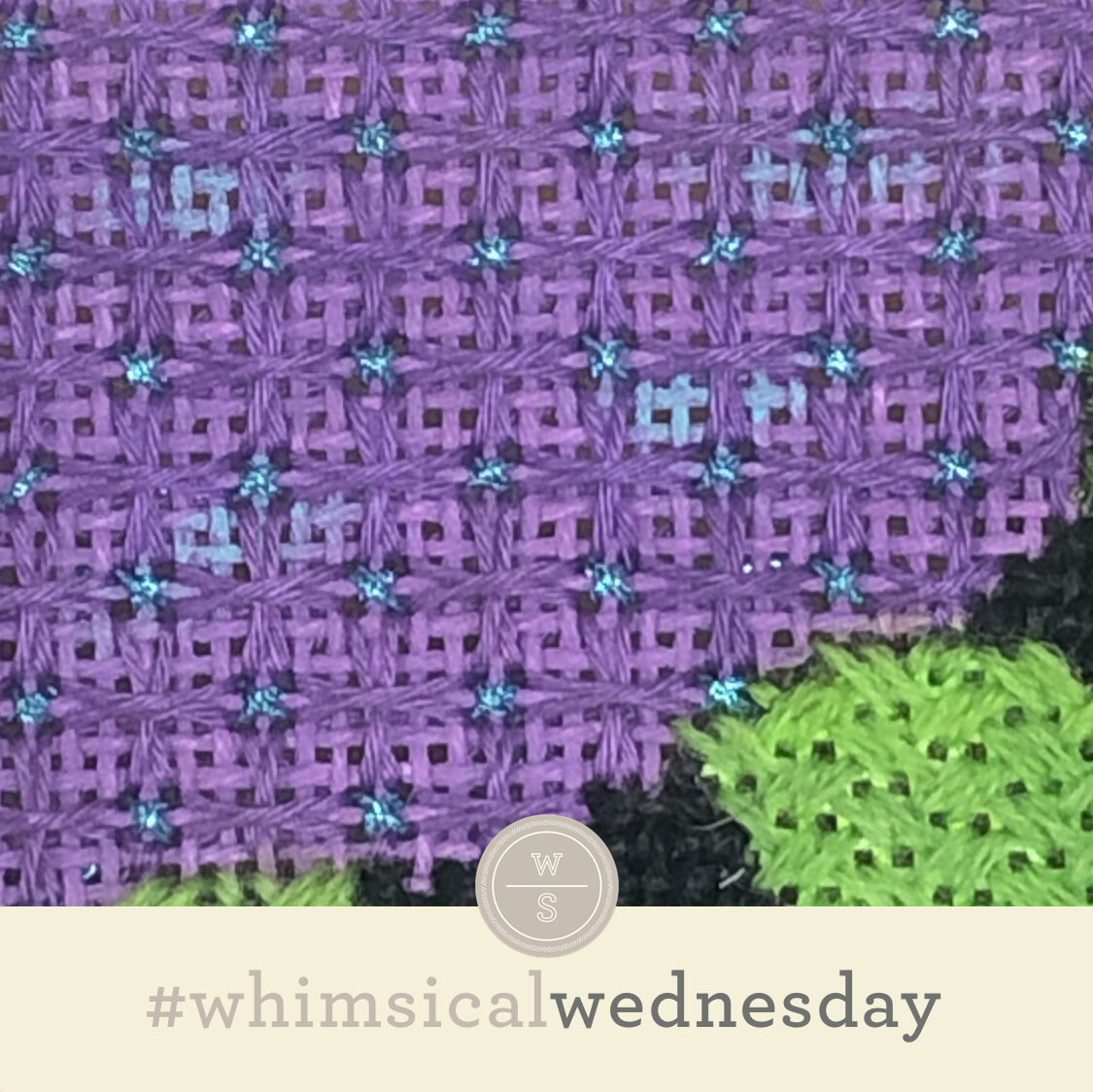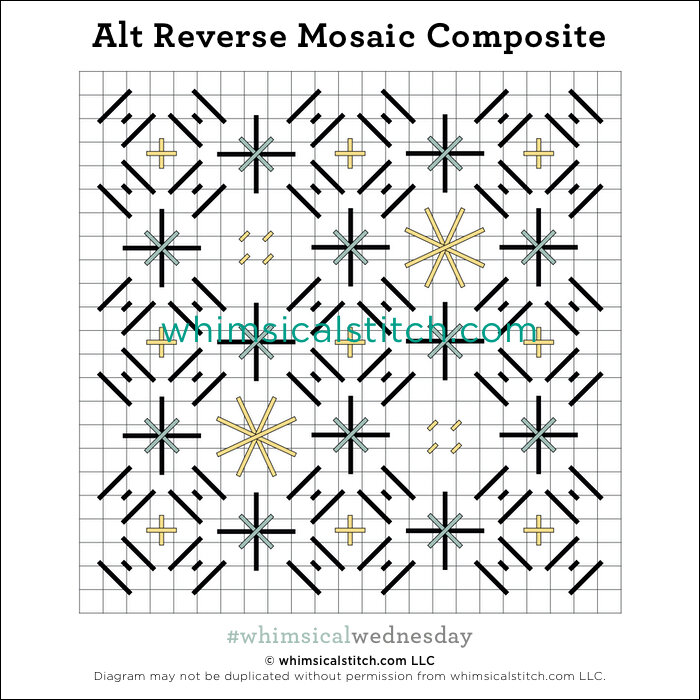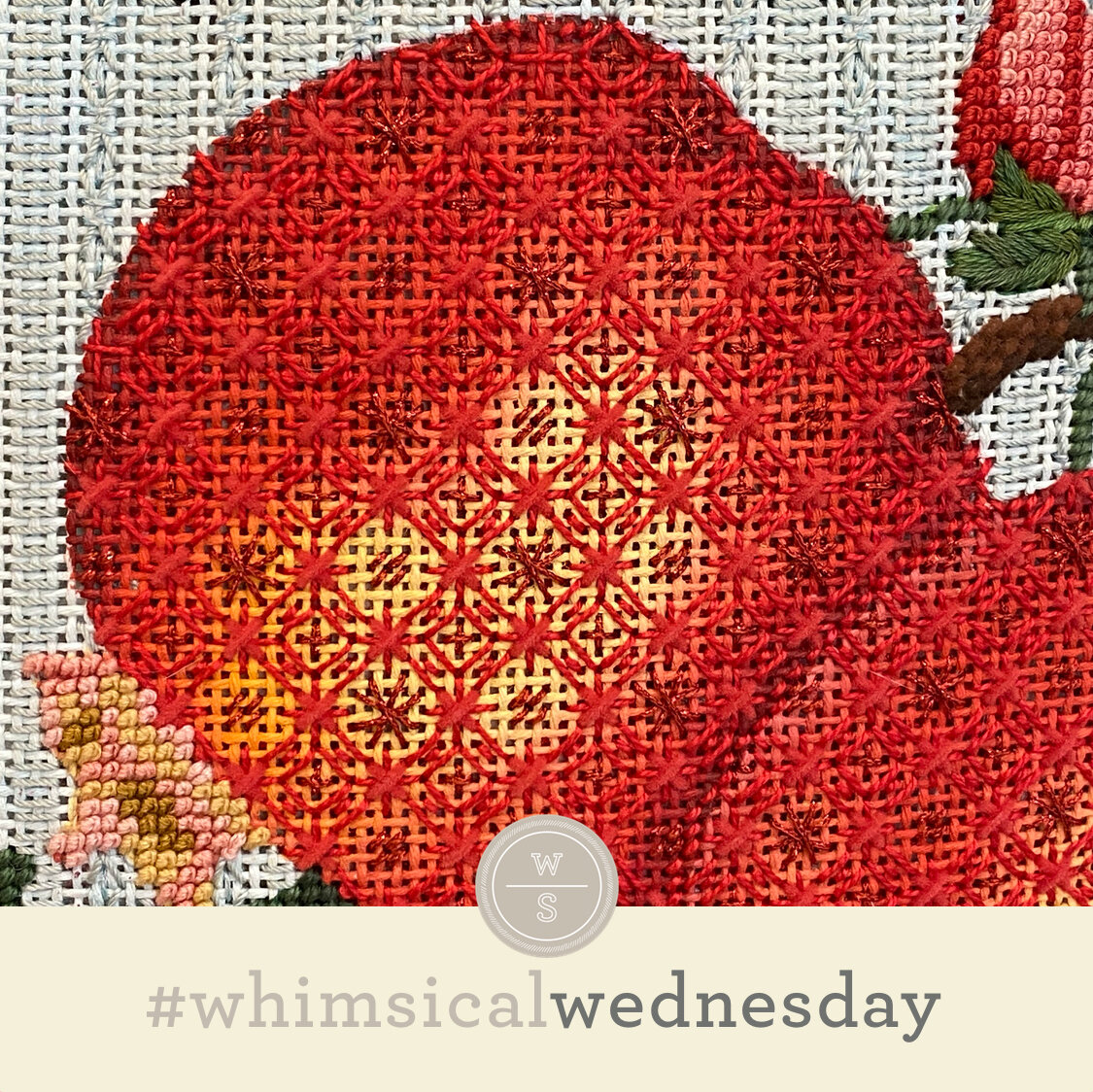I’ve had a fun time playing with and sharing stitches with you for the past few weeks. The truth is I was auditioning background stitches for a Zecca backgammon board and we have a winner! Today’s stitch made me the happiest!
The stitched sample uses Petite Silk Lame (black lines) with two plies of Soie D’Alger (yellow lines) layered on top. I love the flatness and symmetry of the stitch for the backgammon board background. This will help the soon-to-be-beaded birds pop.
I’m looking forward to adding this stitch to some stitch plans I’m working on. I’m playing with the idea of using two shades of green Vineyard Silk for the two threads to help add interest to a hat that is painted with beautiful green shading. Using two colors for this stitch will make the stitch pop even more. For example, at some point, I will use this stitch for a white background, say behind a floral still life. I would use a metallic in a color pulled from the flowers for the black lines with a white matte thread on top. This way, the white remains the primary color (as it’s on top) but there will be a lovely accent color integrated into the background.
I stitched the first layer of diamonds (the black lines) in what I call a modified back stitch, flipping directions as I added stitches, so there would be no visible threads. Alternatively, you could add the stitches with literal back stitches over five rows following the diagonal direction from top right to bottom left and then from top left to bottom right. Repeat with the second layer.
This stitch diagram, along with all other #whimsicalwednesday and #smallspacesunday stitch diagrams, can also be found on a Pinterest board here. Be sure to follow whimsicalstitch.com on Facebook, Pinterest, Instagram, and Twitter.
If you like what you see on this blog, there's more. Mary’s Whimsical Stitches is a series of three books offering contemporary how-to collections of more than 250 stitches (in each volume) for all stitchers, regardless of skill level. All books include updated and sequenced diagrams from this blog plus a collection of all-new stitches from private lessons and other class projects. All three books include chapters on Balanced, Diagonal, Layered, Oblique, Small, and Straight stitches. Volume 1 also includes a chapter on Borders. Volume 2 includes a chapter on Beading, and Volume 3 includes a chapter on Tent Pattern Stitches. Any or all are a great enhancement to your stitch library. Visit here to find a needlepoint retailer that carries my books.
Also, you can download for free the first chapter from my first book which covers basic needlepoint stitches and stitch compensation techniques along with new top-line information on needlepoint materials and tools, how to handle threads, and other helpful needlepoint resources.
whimsicalstitch.com also sells Stitch Guides and Stitch Concepts for Melissa Shirley Designs, Zecca Designs, Sandra Gilmore, Purple Palm, Maggie, and Penny MacLeod, and many more. Click here to see the newest guides and click here to see the entire collection.
I hope you have the perfect spot for this stitch! Please enjoy! Have a wonderful #whimsicalwednesday!
A Note about Diagrams
I use color in diagrams to make them as clear as possible. The primary function of different colored lines is to illustrate a stitch sequence. For example, layering of colors demonstrates you add them in that order. They can also provide ideas on how to integrate additional threads (one line for each color). Or, you can use the same thread for all color lines. That's where I encourage you to use your imagination for the space you are stitching!























